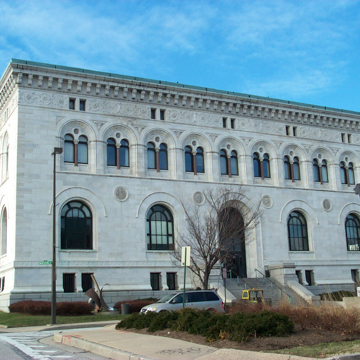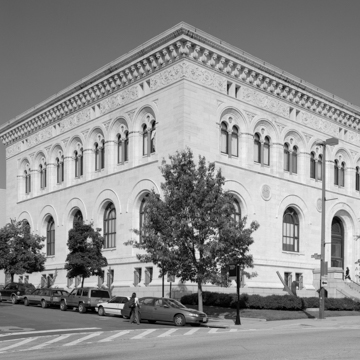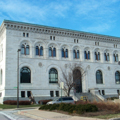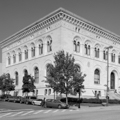MICA is one of the oldest art colleges in the country, founded as the Maryland Institute for the Promotion of the Mechanic Arts in 1826. For many decades the school was housed over the Centre Market until it was destroyed in the 1904 downtown fire, launching plans for a new purpose-built structure located uptown near the Bolton Hill neighborhood. New York City architects Pell and Corbett designed a new Renaissance Revival palazzo for MICA that was partially funded by industrialist and philanthropist Andrew Carnegie. In addition to a library and studios for pottery, metalworking, wood carving, drafting, and textile design, the new building featured galleries and exhibition rooms serving as Baltimore’s only publicly accessible art museum at the time. MICA continues to expand and modernize, adding the sleek and angular glass form of the Brown Center (2003, Charles Brickbauer and Ziger/Snead) to house its digital arts programs and student housing, galleries, and exhibit space in the colorful glass cylinder of The Gateway (2006–2008, RTKL Associates).
You are here
MAIN BUILDING, MARYLAND INSTITUTE COLLEGE OF ART (MICA)
If SAH Archipedia has been useful to you, please consider supporting it.
SAH Archipedia tells the story of the United States through its buildings, landscapes, and cities. This freely available resource empowers the public with authoritative knowledge that deepens their understanding and appreciation of the built environment. But the Society of Architectural Historians, which created SAH Archipedia with University of Virginia Press, needs your support to maintain the high-caliber research, writing, photography, cartography, editing, design, and programming that make SAH Archipedia a trusted online resource available to all who value the history of place, heritage tourism, and learning.










